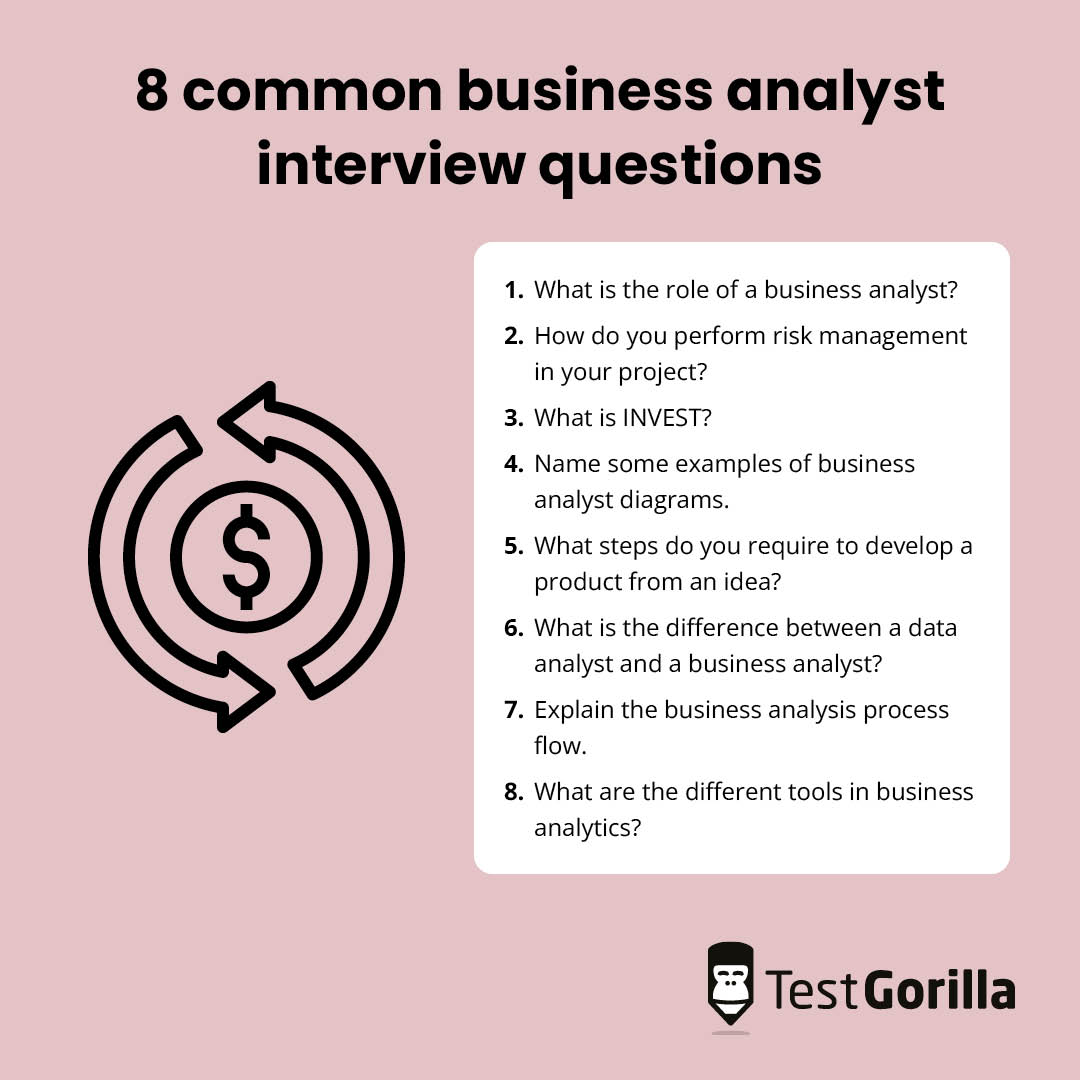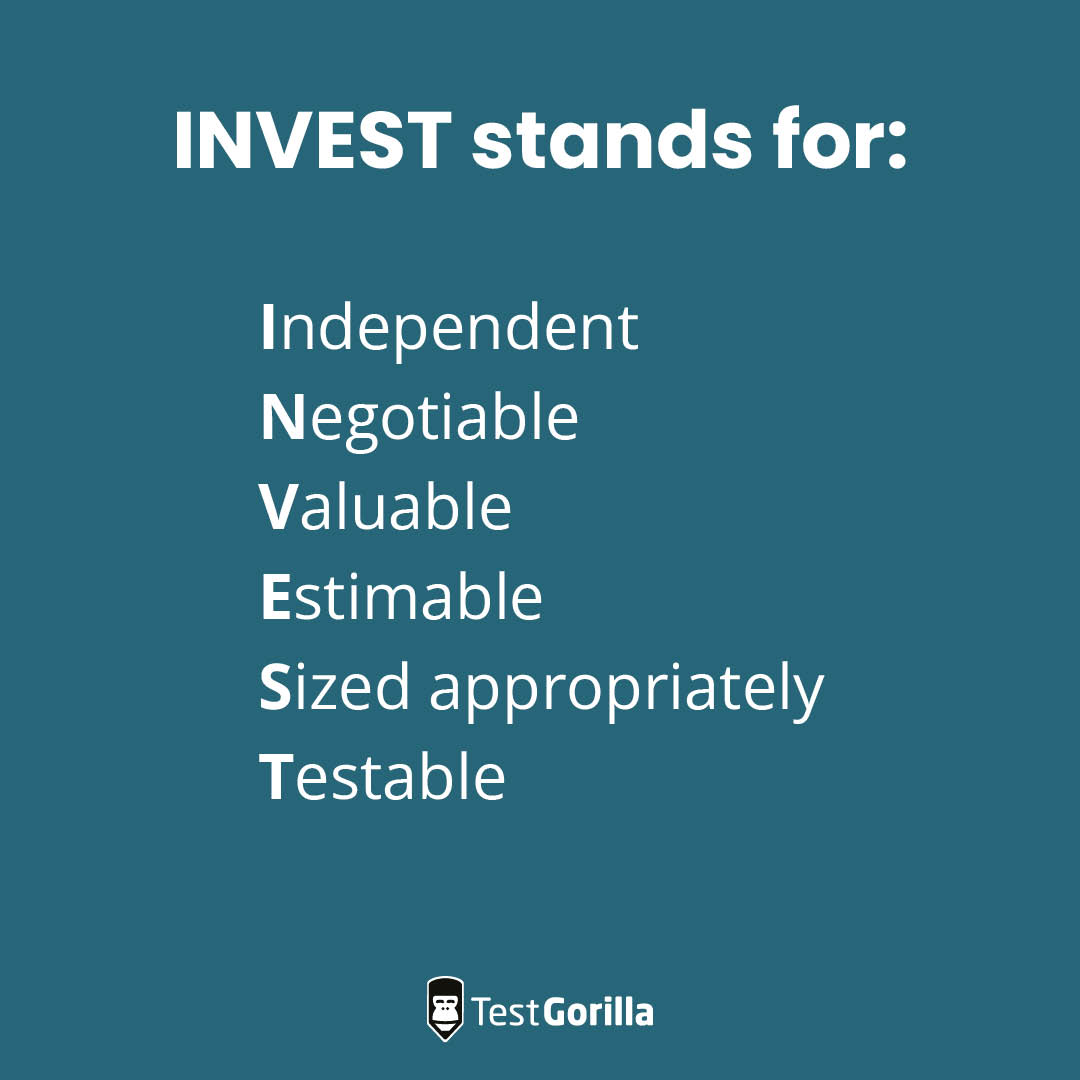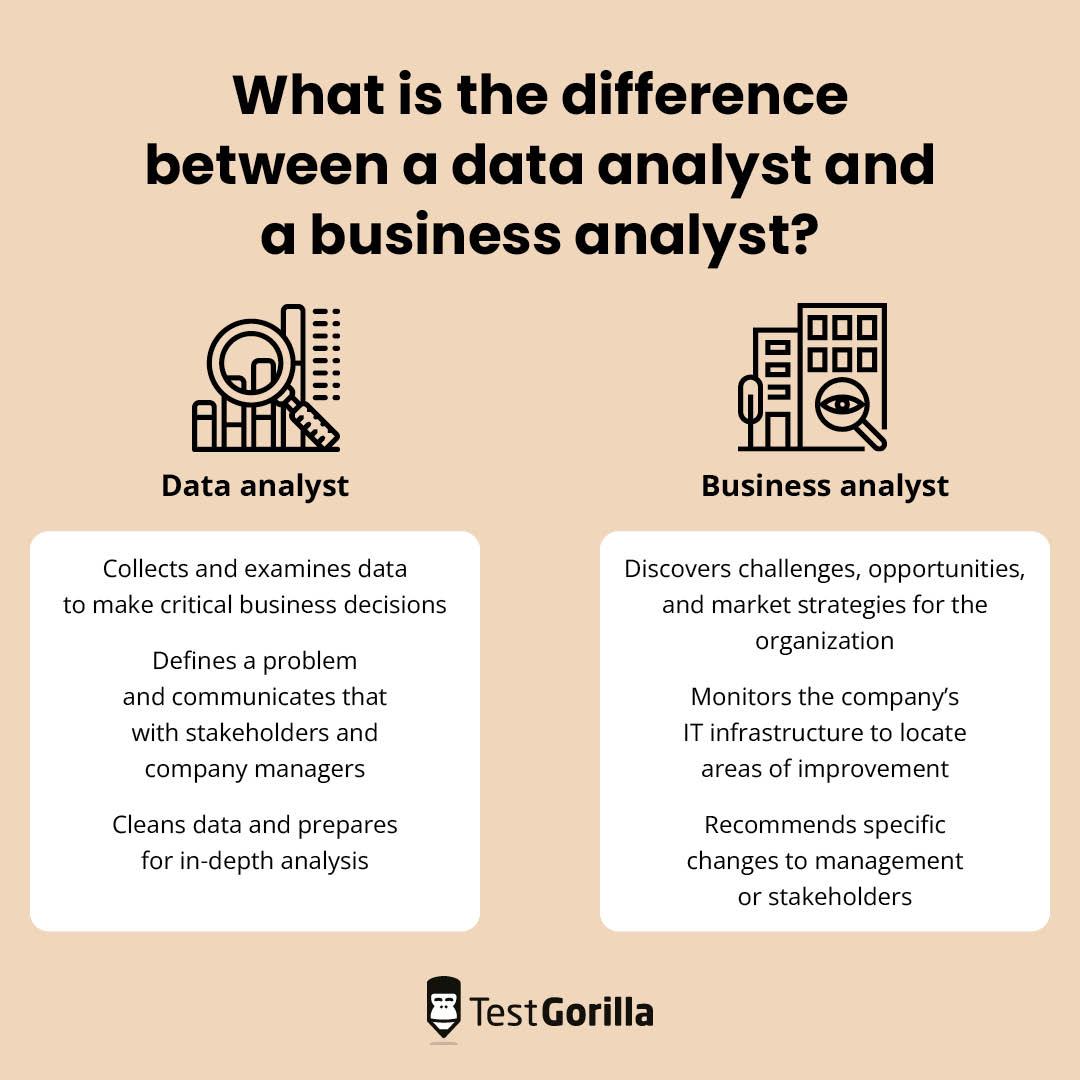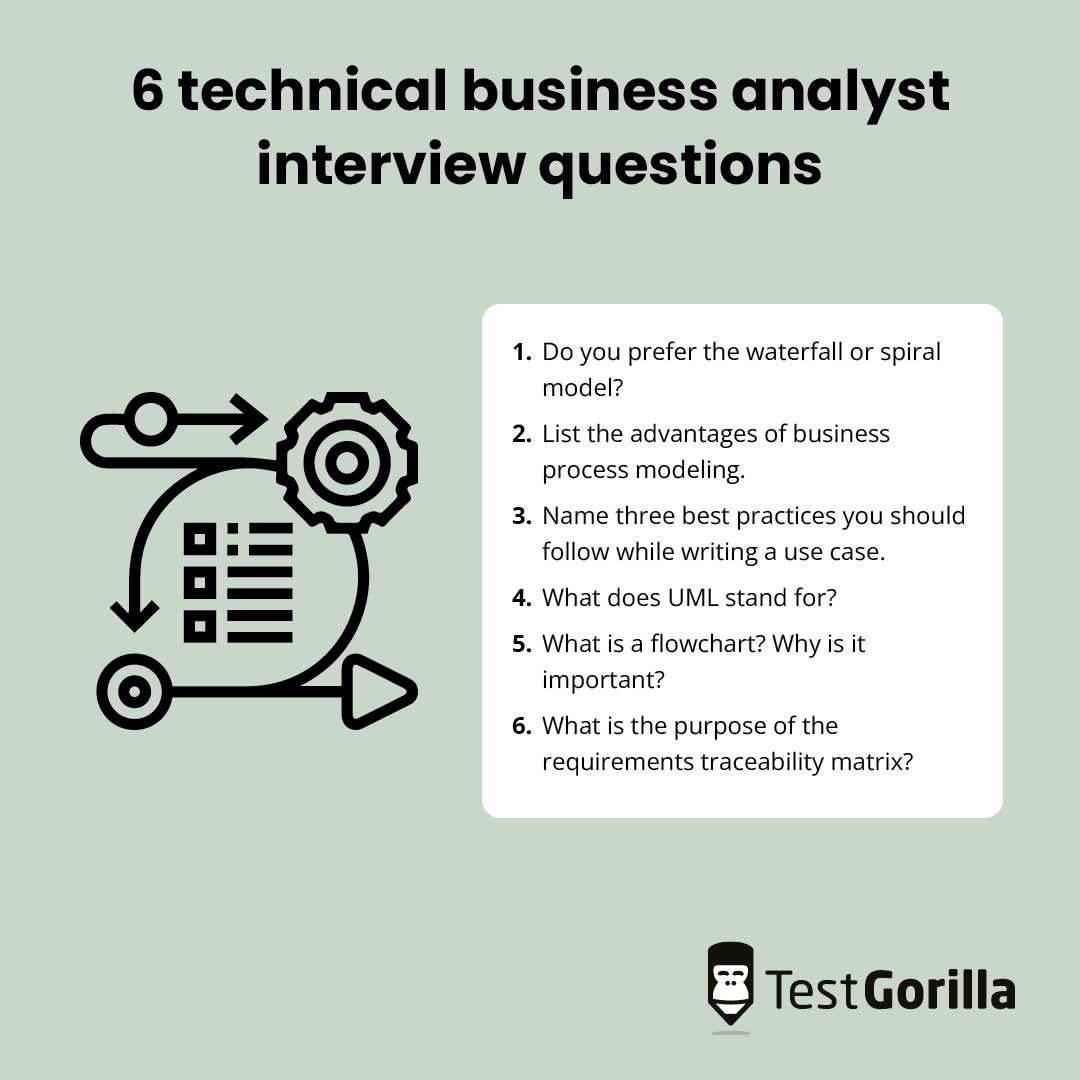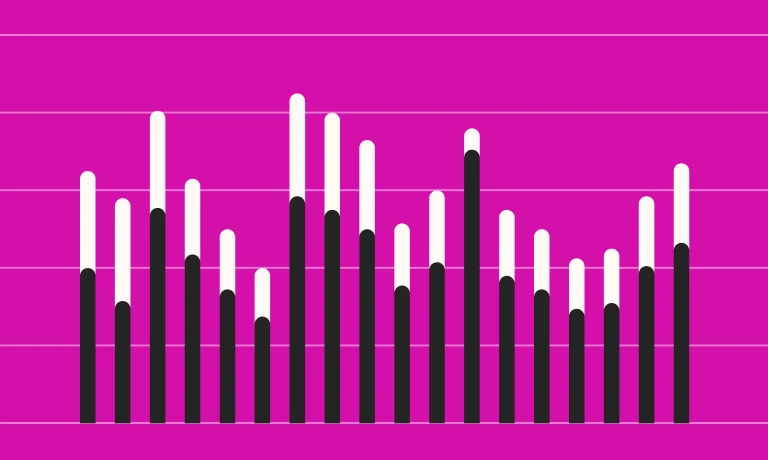50+ BA interview questions to ask technical professionals
Are you finding it difficult to hire a professional business analyst? Choosing relevant skills tests and interview questions can help you identify skilled professionals who best suit the job’s requirements.
You can use a Business Judgment test to evaluate candidates’ strategic thinking and experience in a corporate environment. After comparing their results, it’s time to arrange interviews to better understand their expectations.
For those interviews, it’s essential to ask the right questions, so here are 50+ BA interview questions to hire the right candidate for your team.
Table of contents
- 20 common BA interview questions to ask job applicants
- 8 sample answers to common BA interview questions
- 25 BA interview questions for technical experts
- 6 sample answers to technical BA interview questions
- 15 situational BA interview questions to ask candidates
- 6 sample responses to situational BA interview questions
- At which stage of the hiring process should you use BA interview questions?
- Hire a technical professional using our skill tests and BA interview questions
20 common BA interview questions to ask job applicants
Check out these 20 common BA interview questions to start your interview and better understand the candidate’s personality, knowledge, and skills.
1. What is the role of a business analyst?
2. List some of the skills and tools business analysts use.
3. What is INVEST?
4. How do you stay updated with the latest business trends and knowledge?
5. What are the various stages of a business project?
6. What are the different tools in business analytics?
7. How do you perform risk management in your project?
8. State the differences between a software development life cycle and a project life cycle.
9. What is a feasibility study?
10. Explain the business analysis process flow.
11. What are the differences between risk mitigation and risk avoidance?
12. Describe the phases of an IT project.
13. How will you be able to handle the changes to requirements?
14. What is the difference between a data analyst and a business analyst?
15. What is benchmarking?
16. What documents do business analysts use in a project?
17. How would you manage difficult stakeholders?
18. What is a misuse case?
19. Name some examples of business analyst diagrams.
20. What steps do you require to develop a product from an idea?
8 sample answers to common BA interview questions
The sample answers to the common BA interview questions below can help to determine which candidates best suit the open position in your company.
1. What is the role of a business analyst?
This question may sound easy, but knowing whether the candidate has enough experience and knowledge is important.
A business analyst uses data to provide business insights to different stakeholders. They make data-driven decisions to identify problems in an organization and improve business processes, such as staff development and hiring costs.
2. How do you perform risk management in your project?
Risk management is an essential aspect of business analysis, as these professionals need to evaluate potential risks in an organization. For example, they might identify strategic risks to ensure the business can meet goals and stay ahead of competitors.
Some ways to perform risk management include to:
Identify all potential risks
Determine the probability of each risk
Specify the impact they may have on the business
Reduce the danger by preventing the risk
Observe the outcome
Send candidates a Business Ethics & Compliance test to see how they understand and avoid conflicts of interest.
3. What is INVEST?
INVEST stands for:
Independent
Negotiable
Valuable
Estimable
Sized appropriately
Testable
Business analysts use this term when working with project managers to produce high-quality products and services for clients.
4. Name some examples of business analyst diagrams.
Candidates should understand the several types of business analysis documents. They could explain their experience with using documents or provide a list of diagrams they can use in a project.
Business analysts typically use:
Flowcharts: Stakeholders can read flowcharts to understand business processes and communicate ideas with the business analyst.
Use case diagrams: These diagrams represent the actions, main functions, and services that come with the project.
Activity diagrams: Business analysts use this diagram to evaluate the project’s flow across several departments in the organization.
Sequence diagrams: This diagram shows the interaction and time sequences of messages between different software objects.
Collaboration diagrams: Many business analysts use these diagrams to show the relationships and interactions between objects in the unified modeling language, which can help build new systems.
5. What steps do you require to develop a product from an idea?
There are a few steps that business analysts take when starting a project. The ideal candidate will have experience with developing a product or service from an idea.
You should note down their responses to find out which candidate has the most knowledge in this area.
Common ways of developing a product include to:
Conduct market analysis: Business analysts will gather data from the market by evaluating how it changes and behaves to specific trends.
Follow the SWOT method: Studying the strengths, weaknesses, opportunities, and threats of an organization is essential for improving its processes and identifying potential risks that could harm the product.
Identify personas: A persona represents the characteristics of a regular user on the website. Business analysts can monitor their behavior on each website to improve the product’s outcome.
Perform competitor analysis: This process allows the business analyst to locate the strengths and weaknesses of every competitor in the market.
Create a strategic vision: Developing goals can help the organization work toward a vision and achieve short- and long-term objectives that will distinguish the product from competitors.
Determine product features: Product management and business analysts collaborate to define all product features.
Consider sending candidates a Market Analysis test before the interview to evaluate their ability to optimize business decisions and maintain a company’s competitive advantage.
6. What is the difference between a data analyst and a business analyst?
Candidates should know the difference between these two roles. You can give them a bonus point if they define the key duties of a data analyst and business analyst and how they bring unique benefits to a company.
Below are the differences between each role:
Data analyst | Business analyst |
Collects and examines data to make critical business decisions; Defines a problem and communicates that with stakeholders and company managers; Cleans data and prepares for in-depth analysis | Discovers challenges, opportunities, and market strategies for the organization; Monitors the company’s IT infrastructure to locate areas of improvement; Recommends specific changes to management or stakeholders |
7. Explain the business analysis process flow.
This question determines whether the candidate has experience with business analysis, and they should talk you through the steps of the process. Listen out for their explanation of tasks, techniques, and documents, and how these steps can help them complete their projects.
Steps for the business analysis process flow include:
Gathering data related to the product or service
Arranging a meeting with the stakeholders
Examining the project’s main requirements
Listing every piece of information to ensure a quality product
Understanding the problem domain
Introducing all business requirements to improve the outcome
You can use a Working with Data test to see how candidates perform basic data analysis and understand the principles behind data management.
8. What are the different tools in business analytics?
Experienced candidates should know about the main business analytics tools. They can discuss technical and non-technical tools that help them to conduct market research and gather relevant data.
Below are some common tools they may use:
Technical: Google Docs, SQL, MS Office Suite, enterprise resource planning (ERP) systems, wireframing, customer relationship management (CRM) software, and data visualization.
Non-technical: Requirement elicitation, documentation, project management, and inbound marketing.
Our extensive test library contains relevant tests on many of the above tools and can determine which candidates have software skills and the ability to document important information.
The best insights on HR and recruitment, delivered to your inbox.
Biweekly updates. No spam. Unsubscribe any time.
25 BA interview questions for technical experts
Use these 25 BA interview questions for technical experts with work experience, advanced skills, and knowledge of business analysis trends.
1. Explain UML and its uses.
2. What is the purpose of the requirements traceability matrix?
3. What is business modeling?
4. Define the use case model.
5. What does UML stand for?
6. What do you understand by gap analysis? What are the types of gaps that occur?
7. What is the requirement elicitation?
8. What is a flowchart? Why is it important?
9. Define SaaS.
10. How would you explain a user-centered design methodology?
11. What does application usability mean?
12. What does OLTP stand for? How does it work?
13. How do you frequently manage a customer’s requirements while developing a system?
14. Define analytical reporting.
15. What are non-functional requirements? How do you capture them?
16. Do you prefer the waterfall or spiral model?
17. Explain black box testing.
18. How do you measure the quality of a product?
19. Name three best practices you should follow while writing a use case.
20. What is CaaS?
21. What is the difference between risk and issue?
22. What are the four most important metrics in business development?
23. Explain critical path analysis.
24. State the differences between BRD and SRS.
25. List the advantages of business process modeling.
6 sample answers to technical BA interview questions
These sample answers for technical BA interview questions will help to evaluate your candidates’ responses.
1. Do you prefer the waterfall or spiral model?
The preferable model depends on the scope and type of project. Many business analysts choose a model according to the company’s culture and processes for developing a specific system.
Candidates who choose the waterfall model usually work on small projects with clear requirements while those who prefer the spiral model focus on more complex projects.
2. List the advantages of business process modeling.
A business process model is a visual representation of a product’s workflow. It can help business analysts and stakeholders stay up to date with changes and opportunities. The ideal candidate will understand how business process modeling works to encourage a smooth operation.
The advantages of business process modeling include:
Provides an insight into business processes
Encourages consistency and control over the final product
Determines errors and prevents specific risks
3. Name three best practices you should follow while writing a use case.
Candidates should know that a use case describes system requirements, and it determines how a user may interact with the product in specific scenarios. A business analyst usually writes use cases during stages of software development. They will understand how to:
Use case diagrams when writing the use case
Add user interface details and notes
Be concise when showing interactions
Being able to write a use case properly is an important business analyst skill.
4. What does UML stand for?
UML stands for unified modeling language. It is a general-purpose modeling language that can help software developers construct new systems.
A business analyst may use UML to draw diagrams and show the behavior and structure of specific software.
5. What is a flowchart? Why is it important?
A flowchart uses diagrams and symbols to represent the flow of a system. Business analysts may design technical flowcharts to understand the software and explain its technical aspects to stakeholders.
Flowcharts are important because they help communicate, improve, and define business processes.
Send candidates a Microsoft Excel test to see how they create a flowchart. Excel is one of the best tools for making flowcharts in business analysis.
6. What is the purpose of the requirements traceability matrix?
The requirements traceability matrix (RTC) records client requirements and ensures that the company meets them when creating a product. A business analyst can use RTC to track user cases with specific test cases.
15 situational BA interview questions to ask candidates
Choose from this list of 15 situational BA interview questions to learn more about the candidate’s personality and behavior in the workplace.
1. Explain your work tactics for a project.
2. What documents do you need for your work?
3. Have you ever participated in elicitation meetings?
4. How do you use diagrams in the business analyst role?
5. If there are multiple stakeholders in a project, how do you influence them? How would you work with a difficult stakeholder?
6. Explain how to manage a project’s post-implementation and pre-implementation issues.
7. What is scope creep? How do you avoid scope creep?
8. Do you think a business analyst should be involved in testing?
9. How do you decide that you have gathered all the requirements?
10. How do business analysts perform requirement gathering?
11. Why is it important for a business analyst to get involved when implementing requirements?
12. How do you prioritize tasks when working on a project?
13. Tell me about a suggestion you made that helped the organization you were working for.
14. How do you explain your analysis to someone who isn’t technical?
15. Tell me about a time you had to advise a client toward a different course of action.
6 sample responses to situational BA interview questions
When comparing candidates’ responses, review these sample answers to determine which candidate has the most desirable personality traits.
1. Explain your work tactics for a project.
Candidates should provide clear steps of how they would navigate a project. This question is important for evaluating their work processes and mindset. Every answer will be different, so remember to note down each response to compare them after the interview.
Some general steps include:
Determining their role in the project before defining objectives with the stakeholders
Creating a business plan using steps, budgets, timelines, and deliverables
Defining requirements
Using documents to implement strategies
Assessing the project value to ensure it meets standards
2. What is scope creep? How do you avoid scope creep?
Scope creep is a problem that can occur at any stage in project development. The project’s scope may extend beyond its requirements due to poor planning, extreme perfectionism, or sudden changes to business objectives.
To avoid scope creep, the business analyst has to create a clear plan from the outset. All stakeholders and project managers should agree with the plan before the first stage. Regular communication, whether through meetings or video calls, can ensure everyone is on the same page.
Candidates should also get a bonus point if they mention how to resolve scope creep. One way to do this is to address the problem quickly and make the changes with stakeholders and managers involved.
It’s worth using a Communication Skills test to determine how well candidates can communicate problems with others and use professional etiquette in the workplace.
3. How do business analysts perform requirement gathering?
A requirement gathering can help business analysts, stakeholders, and project managers discuss the product’s specifications. Some ways to do this are to host focus groups or conduct document analysis to ensure the organization has enough resources to complete the project.
Other requirement-gathering methods include:
Sending surveys to gather opinions, feedback, and knowledge of the project
Arranging interviews to have a more open-ended conversation with clients
Scheduling workshops to discuss more ideas and potential risks
4. Explain how to manage the post-implementation and pre-implementation issues of a project.
Candidates should explain these problems and how they affect the outcome. For example, pre-implementation issues occur before the company executes the project. On the other hand, problems that arise after execution refer to post-implementation. Most issues fall in the latter category due to faulty software or poor planning.
Not all business analysts can prevent these issues, but they can improve the planning process to ensure the company meets all requirements.
Use a Fundamentals of Statistics and Probability test to see how candidates predict risks and provide meaningful insights to the company.
5. Why is it important for a business analyst to get involved when implementing requirements?
The business analyst can provide clarity on specific requirements. Without this clear guidance, stakeholders and project managers may cause a human error upon requirement implementation.
These technical professionals will also collaborate with development teams to test and validate the final product.
6. Tell me about a time when you had to advise a client toward a different course of action.
Candidates can discuss ways they would persuade a client to make a different decision. This type of skill is essential for roles that require negotiation and quick thinking.
For example, if the client wants to avoid requirement gathering to save time during project development, but the candidate disagrees with this decision. To change their mind, the candidate talks about the benefits of a focus group and how it can improve the outcome.
A Negotiation test determines which candidates can influence conversations and maintain long-term business relationships.
At which stage of the hiring process should you use BA interview questions?
You should use skills tests before the interview questions to assess candidates’ knowledge, skills, and level of expertise.
Choosing a relevant skill test is essential for hiring the right candidate. For example, you may use the Intermediate Math test to evaluate a candidate’s math skills. To better understand their personality or core beliefs, the 16 Types personality test will help you identify a talented and dedicated professional.
This process is key to making your hiring process easier and quicker for the recruiting team.
Hire a technical professional using our skill tests and BA interview questions
View our extensive test library to discover a whole range of test types, including situational judgment, cognitive function, personality, language, role-related skills, and more. Once candidates complete the tests, you can compare the results to decide which ones to interview.
Sign up for a free 30-minute live demo to learn more about our software and how simple it is to use. Alternatively, dive right in by signing up for our free plan and start creating assessments.
You've scrolled this far
Why not try TestGorilla for free, and see what happens when you put skills first.


